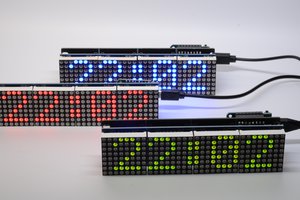I‘ve always been fascinated by lights and all kinds of displays. Nixie tubes certainly are no exception. So I had to built my own Nixie clock as probably every EE does.
So a few months back I ordered five Nixie tubes. Not just any tubes, but the beautiful R|Z568M built by Dalibor Farny. Although I really enjoy to such electronics projects, after seeing the calming glow of those tubes I wanted to be done with it as quickly as possible... One feature I wanted to include this time though: WiFi.
I'm not the biggest fan of the ESP series microcontrollers, so I decided to go all in and use a Raspberry PI Zero W. One of the issues with this approach is boot time. Also, I didn't feel comfortable to handle critical tasks (e. g. cathode poisoning prevention) on the RPi. So I ended up recycling much of the STM32 design (and code) from a previous IN-8 based Nixie clock and just adding a RPi to it. The RPi provides access via a REST API written in Python and sends simple commands to the STM32 (I2C). The STM32 does all the actual work. Way too complicated if you ask me, but still fun.
 Sebastian
Sebastian

 andriy.malyshenko
andriy.malyshenko
 Tamarisk Labs
Tamarisk Labs
 Andrew Lee
Andrew Lee